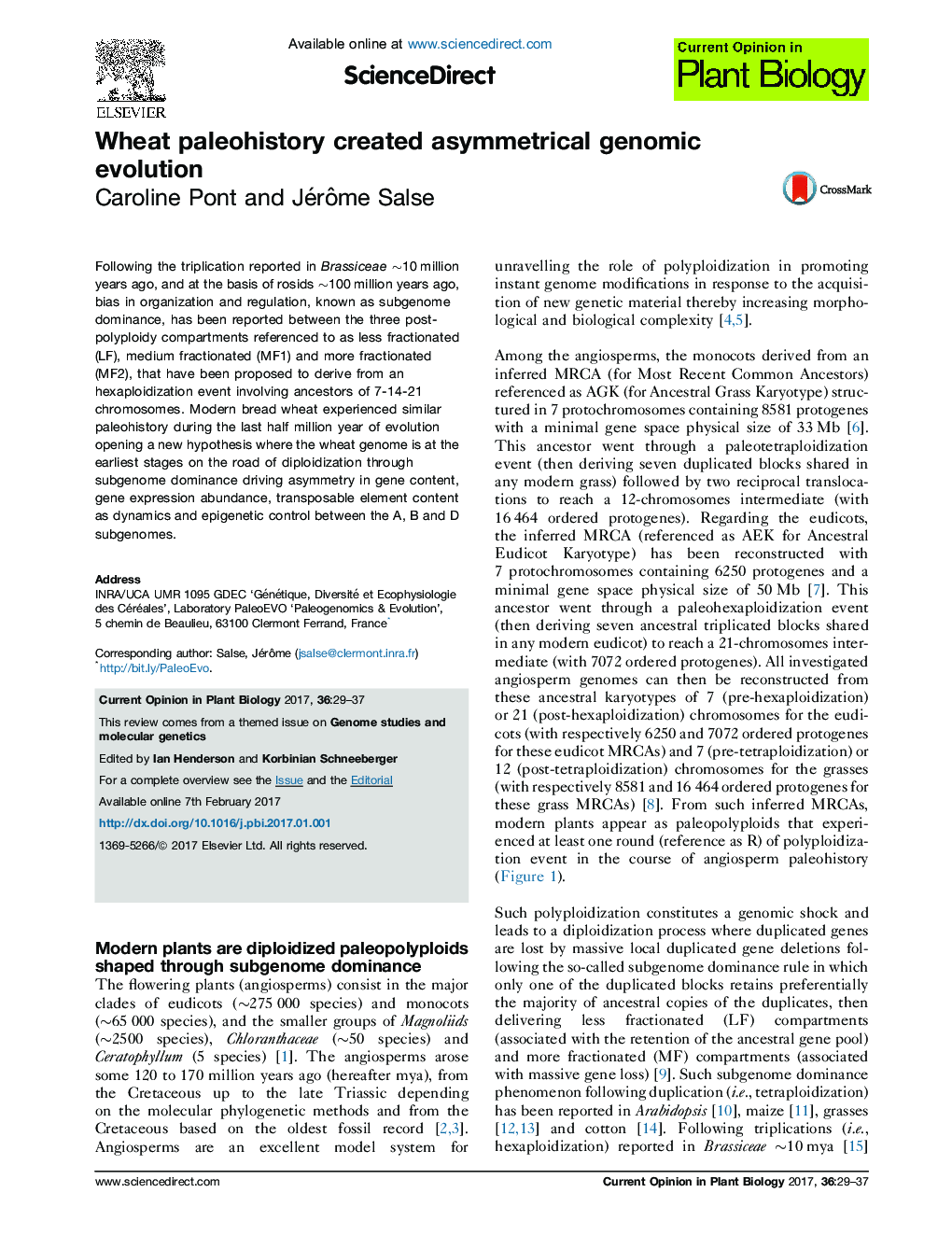| کد مقاله | کد نشریه | سال انتشار | مقاله انگلیسی | نسخه تمام متن |
|---|---|---|---|---|
| 5517454 | 1543199 | 2017 | 9 صفحه PDF | دانلود رایگان |
- Modern plants are diploidized paleopolyploids shaped through subgenome dominance.
- Subgenome dominance derives more fractionated and less fractionated compartments.
- Rosids, Brassiceae, wheat derive from polyploid progenitors of 7-14-21-chromosomes.
- Wheat paleopolyploidy and neopolyploidy derive organization and regulation subgenome asymmetry.
Following the triplication reported in Brassiceae â¼10Â million years ago, and at the basis of rosids â¼100Â million years ago, bias in organization and regulation, known as subgenome dominance, has been reported between the three post-polyploidy compartments referenced to as less fractionated (LF), medium fractionated (MF1) and more fractionated (MF2), that have been proposed to derive from an hexaploidization event involving ancestors of 7-14-21 chromosomes. Modern bread wheat experienced similar paleohistory during the last half million year of evolution opening a new hypothesis where the wheat genome is at the earliest stages on the road of diploidization through subgenome dominance driving asymmetry in gene content, gene expression abundance, transposable element content as dynamics and epigenetic control between the A, B and D subgenomes.
Journal: Current Opinion in Plant Biology - Volume 36, April 2017, Pages 29-37
